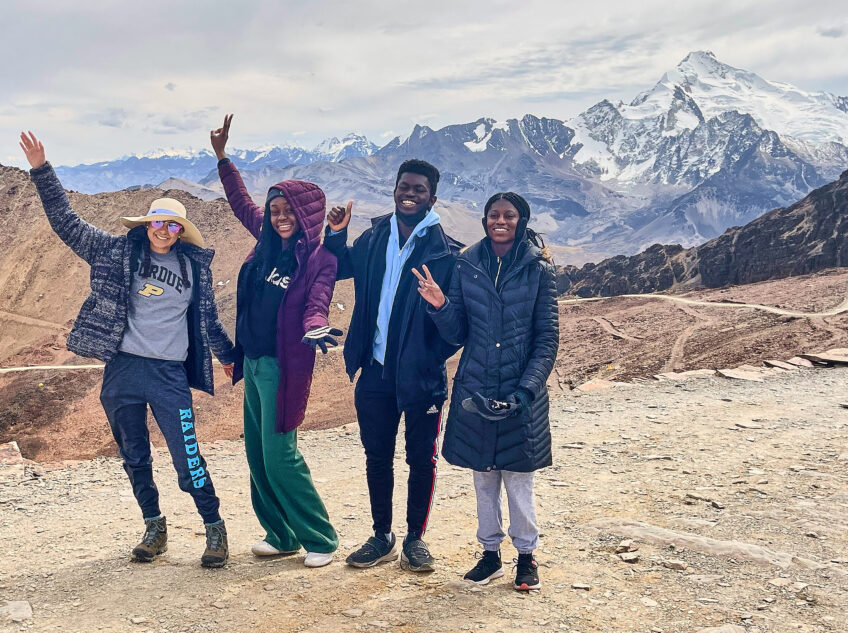In late May 2022, four student interns – Ayomiposi Ajayi, Fisayo Okunuga and first-year undergraduate students Monique Watson (Purdue University) and Hadijat Oke (University of Maryland College Park) – boarded a plane to La Paz, Bolivia, to participate in a week-long atmospheric research campaign. The goal of the research was to measure the flow of city-generated pollutants up to higher elevations, which can accelerate the melting of snow and glaciers in the high Andes mountains.
Traveling under the sponsorship of the U.S. State Department, the students, all of whom at one point participated in Eleanor Roosevelt High School’s internship program, working under Howard University researcher and Greenbelt resident, Dr. David Whiteman, were excited to begin their research in Bolivia. In fact, Oke stated that she “felt very surprised when Dr. Whiteman told us that we were going to Bolivia for our campaign analysis,” exclaiming that “it didn’t really feel real” until the day she started packing for the trip. Prior to landing in Bolivia, months of preparation ensued, starting in November 2021 when student interns began engaging in weekly online meetings with eight Bolivian undergraduate physics students from the Universidad Mayor de San Andrés in La Paz. Okunuga, who documented each meeting, stated, “The weekly meetings were very helpful as we got to learn about what we were going to be doing throughout the course of the trip.” As the students became more familiar with concepts, they were even able to work directly with atmospheric instruments, preparing them further for the goals set to be achieved.
After arriving in Bolivia, the students found that their preparation efforts had been beneficial, as both the Bolivian and U.S. students dove right into the experiment. They set up tents, listened to explanations and learned how to inflate and deploy a tethered weather balloon and properly attach a radiosonde telemetry instrument. On the experiment day, the students split into groups and collected data in various locations, each at a different elevation to maximize the atmospheric instruments and retrieve comparable data. At the end of the day, many files of data consisting of black carbon concentrations, particle mass concentrations, temperature, relative humidity, wind speed, carbon dioxide and more were collected.
The organized and inviting homestay program set up by Bolivian mentors meant that the student interns were comfortable during their stay in Bolivia. After completing the experimental work, the students were given the opportunity to explore the vibrant city of La Paz, where they traveled via the city’s primary transport, Teleférico (cable car), and were able to sample native Bolivian dishes like peanut soup and the infamous marraquetas. As a group, both Bolivian and U.S. students and mentors were given the chance to visit the town of Coroico, where they received a tour of an animal rescue center in the rainforest.
Despite spending a whole week in Bolivia, the U.S. students felt that the days had gone by too quickly. Watson describes her time in Bolivia as “one of the best experiences,” stating that she has “made lasting memories and connections.” Though goodbyes were said, the work for the Bolivian campaign was not over. Even after returning to the U.S, the students were back in weekly online meetings, planning the next steps to analyze the collected data. Overall, the experience was indeed a great way to collaborate with other students and have fun experiences while improving public understanding of how pollution travels and affects Andean snowpack and glaciers which can have a direct influence on water availability.

